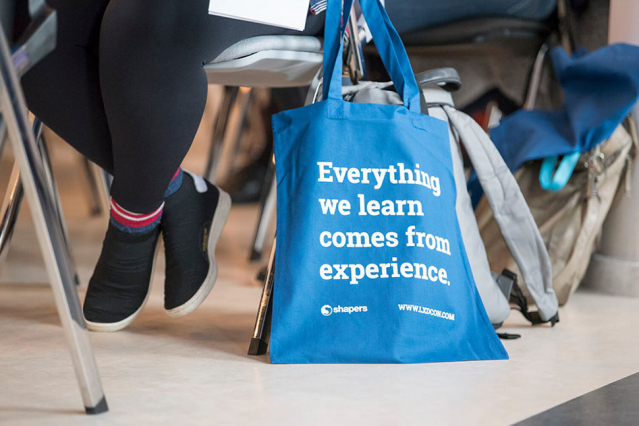Insights
What if students could create their own course?
As a Learning Experience Designer for the Centre for Innovation, part of my role is to facilitate (online) course design. Many online courses are multidisciplinary and involve more than one expert, which means course design sessions frequently include heated discussions on the structure of the course and the importance of including or excluding certain topics. In these sessions, I often learn quite a bit about the subject and find myself wishing that students could participate in course design. Involving students in the early stages of creating a course would allow them to play an active role in deciding how and when they will best learn the topic at hand. Just by being in the room, students would also be able to experience unique learning opportunities as they engage with their teachers and with each other to debate the best direction for the course.
What would it look like for students to be involved in their own course design?
Unsurprisingly, there are already examples of students participating in course design in higher education. To introduce this concept and show what it looks like in practice, below is an overview of three existing approaches. The first example is from Berkeley University, the second is from KaosPilots, an alternative business school in Denmark, and the final example comes from the “Create your own course” initiative at Utrecht University.
Student involvement from beginning to end
At Berkeley University the DeCal program is run completely by students. Students choose the topics of interest, design the courses and facilitate the sessions. This method gives students the opportunity to gain experience as teachers. At the end of the course the students who passed the class are awarded credit by a faculty member who “sponsors” the students and is the official teacher for the course. Course topics range from Pokemon Academy, where students take a critical look at Pokemon’s business strategy as a pop culture phenomena, to Stem Cells: Science and Society.
Bringing students from failure to motivation
Kaos Pilots is an innovative business school in Denmark that offers a three year program for creative leadership and entrepreneurship. Students start their program with a one month project. After this month, students return with the experience of running into a lot of problems and having been confronted by their lack of knowledge. Together with students, staff then create the curriculum for the first year based upon what the students want to learn after their experience with their (usually failed) first projects. After running the programme for a few years, the school has realised that 80% of the students run into the same problems every year, and staff are able to predict what students will want out of their curriculum. The key difference between Kaos Pilots and a standard curriculum is that students ask to be taught instead of being told what they should learn, which makes the programme highly motivating for students. The 20% that is not covered might seem daunting, but it can also be seen as an opportunity to explore new challenges facing students each year.
A structured approach to student-led design
During the teaching and learning conference in 2018 at Utrecht University, a few students shared their experience about a course titled: “Create your own course”. This course was an interdisciplinary elective for students from all faculties. The course started out with 10 weeks of designing where students gained knowledge about the basic principles for educational design that they could immediately put into practice. The example shared during the conference was by students from education sciences. For this study, the process was especially relevant since it is highly likely that students who graduate will be designing courses in their future jobs. The students enjoyed the opportunity to bring in subjects that they felt were missing from their curriculum and took the initiative to fly in experts on selected topics to teach some of their classes. During the design process the students learned valuable lessons about planning, teamwork and creating relevant and doable assignments.
What are the benefits?
Involving students in the design process for your course can be helpful and motivating in many ways. It is a great way to stimulate active participation and connect to what and how students want to learn. In projects like “create their own course” students learn entrepreneurship skills, such as being able to develop an idea into a concrete outcome. By leaving space for students to add topics to the curriculum, teachers can create room for more flexible learning pathways.







